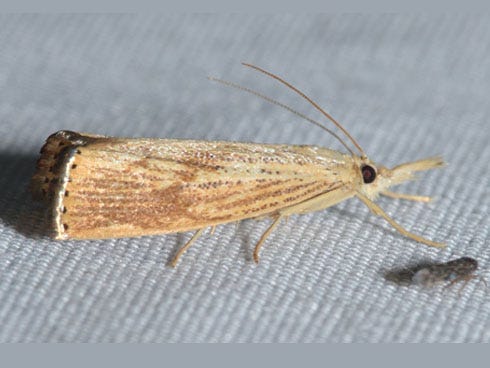
As the weather gets hotter, homeowners want to maintain their yard without spending hours in the sun.
Focusing on the most likely problems can save some sweat.
It is too hot for most herbicides, so let weeds slide. Instead, deal with summer bugs, drought and fungus.
When summer comes to Northwest Florida, so do bugs. The sod webworm and Armyworm moths have entered the area; chinch bugs are at peak reproduction.
If your St. Augustinegrass has brown patches with missing blades or looks like someone took a flamethrower to areas, look closer.
The “worms” (actually caterpillars) can be found curled up on the soil surface. A battery-operated hand vacuum will enable you to pull chinch bugs from the blades' base.
The second-best option is submerging a shovelful of declining turf in a 5-gallon bucket half full of water and gathering floaters for identification. Weekly inspection will enable you to stay on top of the potential problem.
With heat factors in the 100s and rain in a feast-or-famine state, lots of turfgrass — especially St. Augustine and Zoysia — has folded up and wilted.
While both are labeled “drought tolerant," most people don’t understand the way grasses “tolerate” the lack of water.
These two grass species are biologically capable of shutting down to conserve water. They do this by turning brown.
Sounds odd, but the grasses that recover the best from extended drought are those that look like they are dying as soon as they are dry.
Expect it to happen, and know they will turn green again.
Still, some cultural practices can be used on any grass type and will improve its ability to resist experiencing this ugly stage. Increasing mowing height and decreasing irrigation frequency are just two of them.
Along with heat comes humidity, or moisture in the air. Plant-disease-causing organisms, known as fungus, love moisture.
The more of it and the longer it lasts on the leaves, the easier it spreads its spores.
That means grey leaf spot and brown patch diseases can reproduce rapidly. Over the summer, the lawn area frequently experiences spots on the grass blades and patches of “rotting” grass. Any efforts to reduce the length of time the yard stays wet can help reduce the occurrence.
While we can't stop late afternoon rain showers, you can avoid watering just before sundown. Early sunrise is a much more efficient watering time.
WANT MORE INFORMATION?
For other tips to help you with your yard, see the Florida Yards and Neighborhoods handbook.
Sheila Dunning is a commercial horticulture agentat the University of Florida's Institute of Food and Agricultural Sciences Extension office in Crestview.
This article originally appeared on Crestview News Bulletin: DUNNING: Northwest Florida's 3 common summer lawn issues
